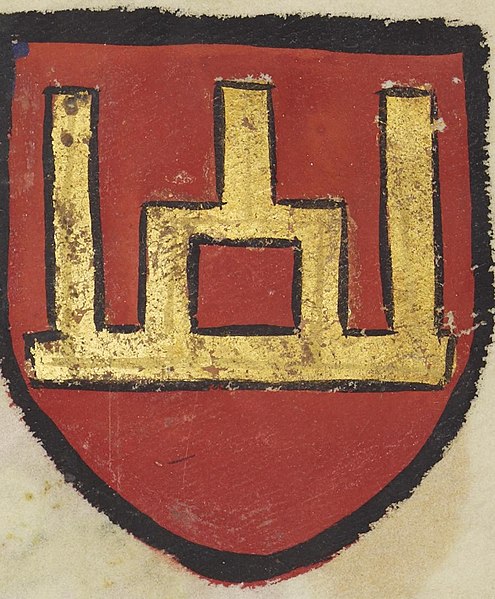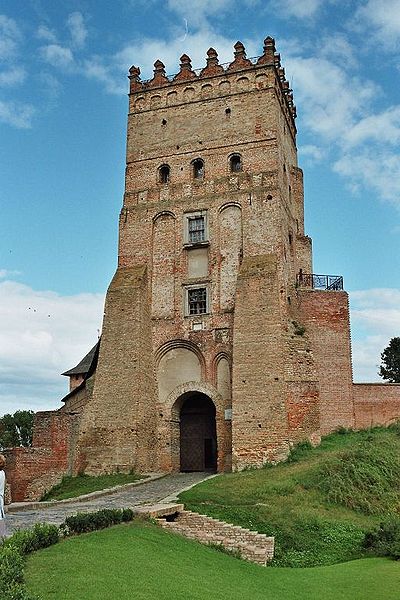The Grand Duchy of Lithuania was a sovereign state in northeastern Europe that existed from the 13th century, succeeding the Kingdom of Lithuania, to the late 18th century, when the territory was suppressed during the 1795 partitions of Poland–Lithuania. The state was founded by Lithuanians, who were at the time a polytheistic nation of several united Baltic tribes from Aukštaitija, which by 1440, became the largest European state controlling an area from the Baltic Sea in the north to the Black Sea in the south.
Columns of Gediminas
Gediminas' Tower and other remnants of the Upper Castle in Vilnius
Lubart's Castle in Ukraine, built by the son of Gediminas' Liubartas in the mid-14th century, is famous for the Congress of Lutsk which took place in 1429
Trakai Island Castle, built by Grand Duke Vytautas, which served as a residence of Lithuanian Grand Dukes
Lithuanians are a Baltic ethnic group. They are native to Lithuania, where they number around 2,378,118 people. Another two millions make up the Lithuanian diaspora, largely found in countries such as the United States, United Kingdom, Brazil, Russia, and Canada. Their native language is Lithuanian, one of only two surviving members of the Baltic language family along with Latvian. According to the census conducted in 2021, 84.6% of the population of Lithuania identified themselves as Lithuanians, 6.5% as Poles, 5.0% as Russians, 1.0% as Belarusians, and 1.1% as members of other ethnic groups. Most Lithuanians belong to the Catholic Church, while the Lietuvininkai who lived in the northern part of East Prussia prior to World War II, were mostly Lutherans.
Lithuanian šakotis
First Lithuanian book (1547) The Simple Words of Catechism by Martynas Mažvydas
The Roman Catholic Vilnius Cathedral in the center of Vilnius, the capital of Lithuania
Lithuanian folklore band Kulgrinda performing in Vilnius








